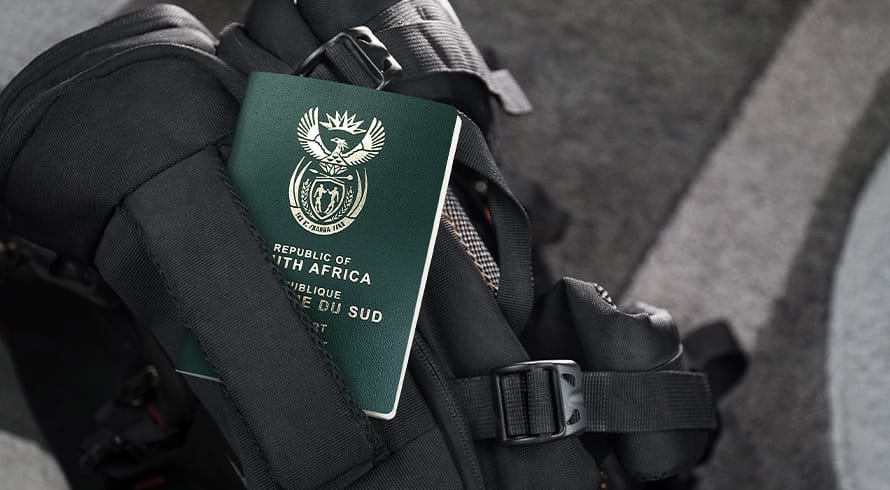Residue stockpiles and residue deposits: Making sense of the amendments maze
At a glance
- There has been a long-standing intention to move the regulation of residue stockpiles and residue deposits from the ambit of the National Environmental Management: Waste Act 59 of 2008 (NEMWA) to that of the National Environmental Management Act 107 of 1998 (NEMA).
- A 2018 reworked version of the National Environmental Management Laws Amendment IV (NEMLA IV) Bill proposed to amend NEMWA to specifically exclude residue stockpiles and residue deposits from the scope of "waste", providing that it will be regulated instead under NEMA, with the Minister of Mineral Resources and Energy remaining the competent authority.
- Despite the commencement of the relevant provisions under the now published NEMLA IV Act being delayed by a recent decision of the Constitutional Court, newly proposed amendments to the 2014 Environmental Impact Assessment Regulations and associated Listing Notices align with the anticipated regulatory transition from NEMWA to NEMA.
This follows on the first amendments that were published in the Government Gazette in June 2021 (2021 Notice), but which did not take effect, where residue stockpiles and deposits were first introduced to the EIA Regulations and Listing Notices.
While the proposed amendments under both the 2023 Notice and 2021 Notice do align with the long-standing intention to move the regulation of residue stockpiles and residue deposits from the ambit of the National Environmental Management: Waste Act 59 of 2008 (NEMWA) to that of the National Environmental Management Act 107 of 1998 (NEMA), recent judgment handed down by the Constitutional Court has stalled the regulatory transition.
NEMWA to NEMA transition
Residue stockpiles and residue deposits were historically regulated and approved as part of a mine’s Environmental Management Programme in terms of the Mineral and Petroleum Resources Development Act 28 of 2002 (MPRDA), with NEMWA expressly excluding them from its regulatory scope.
To align with amendments made to NEMWA in 2014 to remove the exclusion and bring residue stockpiles and residue deposits within the ambit of NEMWA, further amendments were made in 2015 to the List of Waste Management Activities that have, or are likely to have, a Detrimental Effect on the Environment (NEMWA Listed Activities) with the purpose of designating corresponding listed waste management activities specific to the establishment or reclamation of residue stockpiles and residue deposits.
As a result of the inclusion of two residue stockpile and residue deposit related activities in the NEMWA Listed Activities, any person intending on establishing a residue stockpile or residue deposit or reclaiming “waste” from a residue stockpile or residue deposit had to apply to the Department of Mineral Resources and Energy for a waste management licence before commencing with such activities. At present, these activities are still included under the NEMWA Listed Activities and are further regulated in terms of the 2015 Residue Stockpiles and Residue Deposits Regulations.
Following initial iterations, the 2018 reworked “D” version of the National Environmental Management Laws Amendment IV (NEMLA IV) Bill proposed to amend NEMWA to, again, specifically exclude residue stockpiles and residue deposits from the scope of “waste”, providing that it will be regulated instead under NEMA, with the Minister of Mineral Resources and Energy (Minerals Minister) remaining the competent authority.
As was presented to Parliament by the Chamber of Mines at the time of NEMLA IV’s introduction, the regulation of residue stockpiles and residue deposits as a “waste” was impractical, both from a legal and business perspective. More specifically:
- It was contrary to the purpose and progress made under the One Environmental System.
- Residue stockpiles and residue deposits are “integral” to mining operations, and should be managed at such.
- Residue stockpiles and residue deposits constitute valuable resources with economic potential for recovery of minerals.
After years of parliamentary debate and multiple amendments, the NEMLA IV Act was finally assented to and published in June 2022, with the majority of the statute signed into law a year later in June 2023. However, certain provisions, including the revised definition of “waste” and the repeal of section 43A of NEMWA, did not commence owing to the recent decision of the Constitutional Court in South African Iron and Steel Institute and Others v Speaker of the National Assembly and Others [2023] ZACC 18.
Constitutional Court judgment
In its judgment handed down on 26 June 2023, the Constitutional Court held that “Parliament had failed to comply with its constitutional obligation to facilitate public involvement in its legislative processes” in respect of specific provisions of NEMLA IV, including the amended definition of “waste”. In the interim, and allowing Parliament “an opportunity correct the defect”, the definition of “waste” as per NEMWA remains in force, with residue stockpiles and residue deposits regulated as such.
While this has stalled the ‘NEMWA to NEMA transition’ in relation to residue stockpiles and residue deposits, the publication of the 2023 Notice is a reminder that the regime will ultimately be reformed to provide for a more coherent, rational approach to regulating these facilities as integral components to mining operations via the environmental authorisation (EA) process rather than the waste management licence process.
Proposed amendments under the EIA Regulations and Listing Notices
While the timing for promulgation of both the 2021 and 2023 Notices is unclear, and will need to align with the commencement of the relevant outstanding provisions under the NEMLA IV Act, it is worth taking note of the proposed amendments to the EIA Regulations and Listing Notices that relate to residue stockpiles and residue deposits, including:
- Insertion of the definitions of “residue stockpiles” and “residue deposits”, which align with their existing definitions under NEMWA, as read with the MPRDA.
- The Minerals Minister is the competent authority in relation to any application for an EA for the reclamation or expansion of a residue stockpile or residue deposit.
- The following comprise listed activities requiring an EA to commence:
- Any activity, including the operation thereof, undertaken for purposes of the reclamation of a residue stockpile or residue deposit, which activity requires a mining right in terms of the MPRDA, as well as activities contained in Listing Notices 1 and 3.
- The reclamation, or the expansion and operation, of a residue stockpile or residue deposit established prior to the commencement of the MPRDA.
- Expansion of prospecting, mining, exploration or production operations, which includes the expansion of a residue stockpile or residue deposit, or the reclamation thereof.
- Any activity requiring a prospecting right, mining permit or exploration right in terms of the MPRDA, or the reclamation of a residue stockpile or residue deposit, which triggers an activity listed in any of the Listing Notices, required to exercise the right.
The drafting of the amendments could be improved for the sake of clarity, specifically in relation to the wording of the listed activities. That being said, it is noteworthy that the 2021 and 2023 Notices do seem to be aimed at clarifying longstanding regulatory uncertainties in relation to residue stockpiles and residue deposits, including that (i) in addition to an EA, authorisation is required in terms of the MPRDA for reclamation of residue stockpiles and residue deposits; and (ii) reclamation or expansion of historical pre-MPRDA residue stockpiles and residue deposits requires an EA, but does not constitute mining.
Next steps
It is unclear how long the process will take to, as per the wording of the Constitutional Court, “correct the defect” in relation to the relevant provisions under the NEMLA IV Act. This is especially considering that the correction will entail the relevant parliamentary and provincial bodies having to undertake public participation processes, as per their constitutional mandate.
In respect of residue stockpiles and residue deposits specifically, the 2015 Residue Stockpiles and Residue Deposits Regulations will also have to be amended, as they currently still fall within the ambit of NEMWA.
The NEMWA to NEMA transition therefore remains ongoing, with the mining industry having to continue to wait for a long-anticipated (and much needed) regime change to be implemented.
The commenting period for the 2023 Notice ends on 4 September 2024.
The information and material published on this website is provided for general purposes only and does not constitute legal advice. We make every effort to ensure that the content is updated regularly and to offer the most current and accurate information. Please consult one of our lawyers on any specific legal problem or matter. We accept no responsibility for any loss or damage, whether direct or consequential, which may arise from reliance on the information contained in these pages. Please refer to our full terms and conditions. Copyright © 2025 Cliffe Dekker Hofmeyr. All rights reserved. For permission to reproduce an article or publication, please contact us cliffedekkerhofmeyr@cdhlegal.com.
Subscribe
We support our clients’ strategic and operational needs by offering innovative, integrated and high quality thought leadership. To stay up to date on the latest legal developments that may potentially impact your business, subscribe to our alerts, seminar and webinar invitations.
Subscribe




